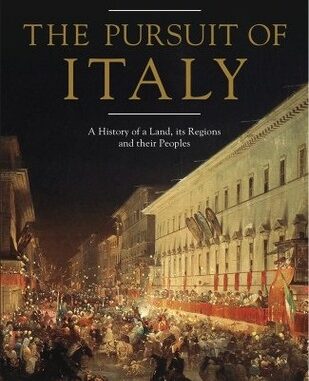
When it comes to history, there are certain regions that I consider myself pretty knowledgable on: Germany, Russia, Poland, to name three. Italy, however, is very much not one of those regions. It’s something that I’ve been wanting to fix for a while, and so I was looking forward to reading ‘The Pursuit of Italy’, David Gilmour’s one volume history of the country. I guess the most important question to ask after reading, then, is this: do I now feel more knowledgable about Italy? Absolutely. For example, I can now tell you that in Renaissance-era Europe, Italian merchants were considered by Poles to be ‘feeble, effeminate, weedy lute players’…and let’s be honest, any book with a fact like that has to be looked upon reasonably fondly. However, I think it’s quite telling that after all the hours I spent with this book, it’s a childishly amusing fact such as that which has ended up sticking with me. The reason I remember that fact is simply because it was memorable. Large chunks of the book’s remainder, however, can’t claim the same.
The main reason for this is Gilmour’s insistence on trying to pack all of Italian history up to 1860 (when the Italian regions finally began their unification into one state) into the first half of the book. You simply can’t pack thousands of years of history into 200 pages, no matter how good a historian, or writer, you are. For one thing, it’s immensely confusing for a reader such as myself who is going in with little background knowledge. What ends up happening is that everything becomes a huge jumble and more time is spent flicking backwards to remember who’s who, and what the hell is going on, than is spent actually reading the book. The second half is infinitely better, focusing as it does on not only a much shorter period of time, but Gilmour’s preferred period of study. Despite Gilmour’s assertion that the book is not an academic text, the first half, on top of the above faults, is also incredibly dry in places; on more than one occasion, I was left in an almost catatonic state. As the book moves into a more modern era, though, the writing comes alive. Gilmour’s demythologising of Italy’s legends of unification was particularly enjoyable, while his exploration of Italy’s role in World War I was fascinating and powerful. It was these chapters which were the easiest to read, while, most enjoyably, Gilmour did an excellent job of tying these stories to both Italy’s past and future.
Gilmour’s main aim in writing ‘The Pursuit of Italy‘ appears to have been an attempt at proving that the regions of Italy should never have been unified. It’s an interesting theory, and sadly one that I am in no real position to argue for or against, but Gilmour’s argument seems to fails in several areas. As Gilmour himself states, the geographic position of Italy, with its natural borders, could not be more ideal. Tuscany may well be a unique and beautiful region, and there may well be a distinct North/South divide within the country, but are these really strong enough reasons to therefore suggest that the geographical and historical factors which have brought them together should just be ignored? From California to Alaska, the USA is made up of unique states, but nobody could deny that it is these differences which make the country what it is. Gilmour struggles to answer why Italy is any different. Another problem with Gilmour’s argument is that he largely fails to acknowledge the benefits of Italy’s unification, and how a divided country without these advantages would have faced the enormous struggles of the 20th century. Gilmour’s Italian ideal seems to be a nice concept, and he certainly makes a detailed and intriguing argument for it, but it is ultimately unconvincing.
As I said above, I finished ‘The Pursuit of Italy‘ knowing far more about the country than I did previously. For various reasons though-lack of engagement with the reader, an overly complex structure, and a faulty underlying argument-I couldn’t escape the feeling that I should have learnt more. It’s an intelligent, interesting book and Italian aficiondos will find plenty to enjoy, but those at the very beginning of their Italian journey should probably look elsewhere.

Leave a Reply